Scorpaenidae: ABH III A1
Scorpaenopsis possi Randall & Eschmeyer, 2001 & Parascorpaena mossambica (Peters, 1855).
Poss's scorpionfish & Golden scorpionfish..
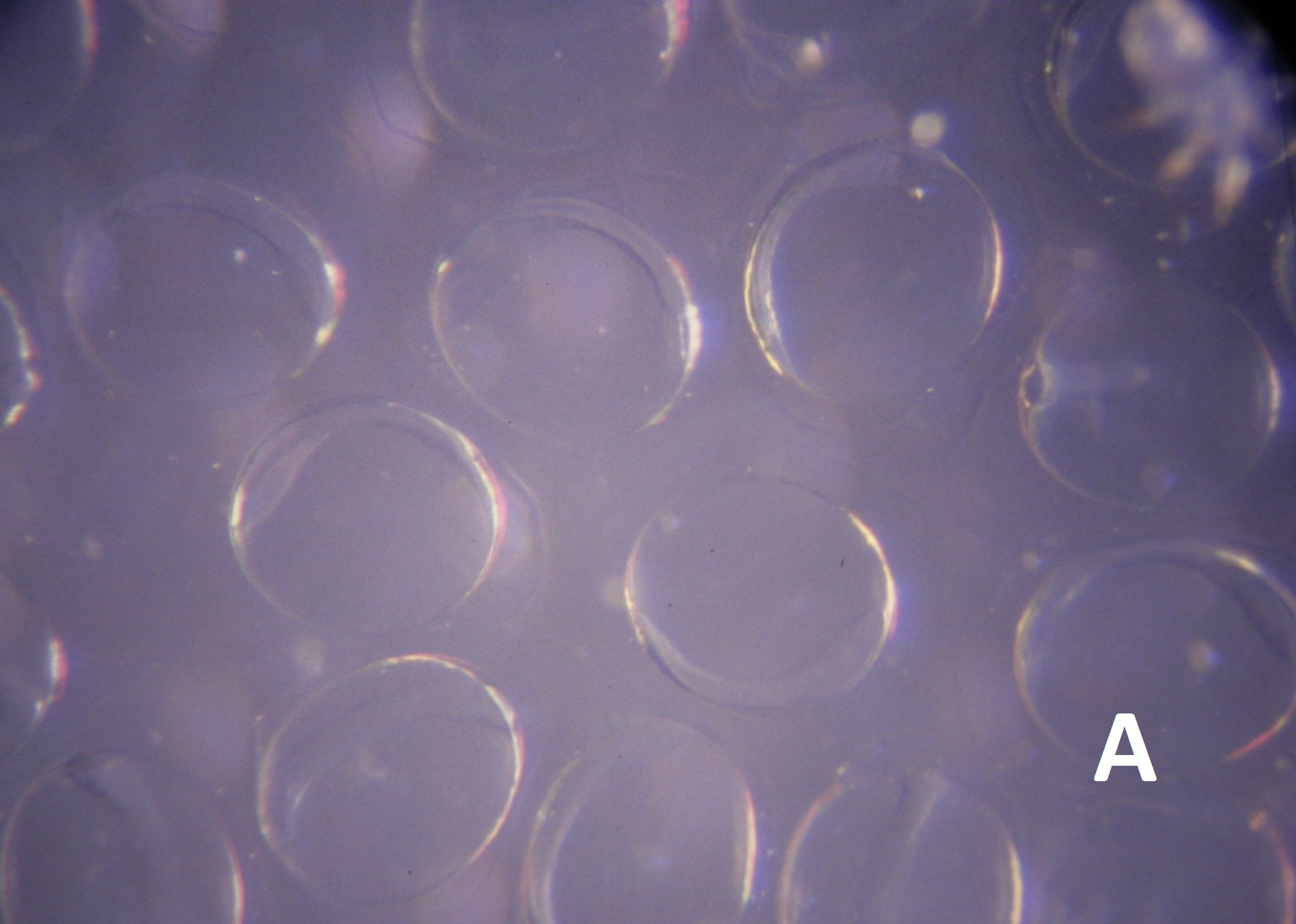
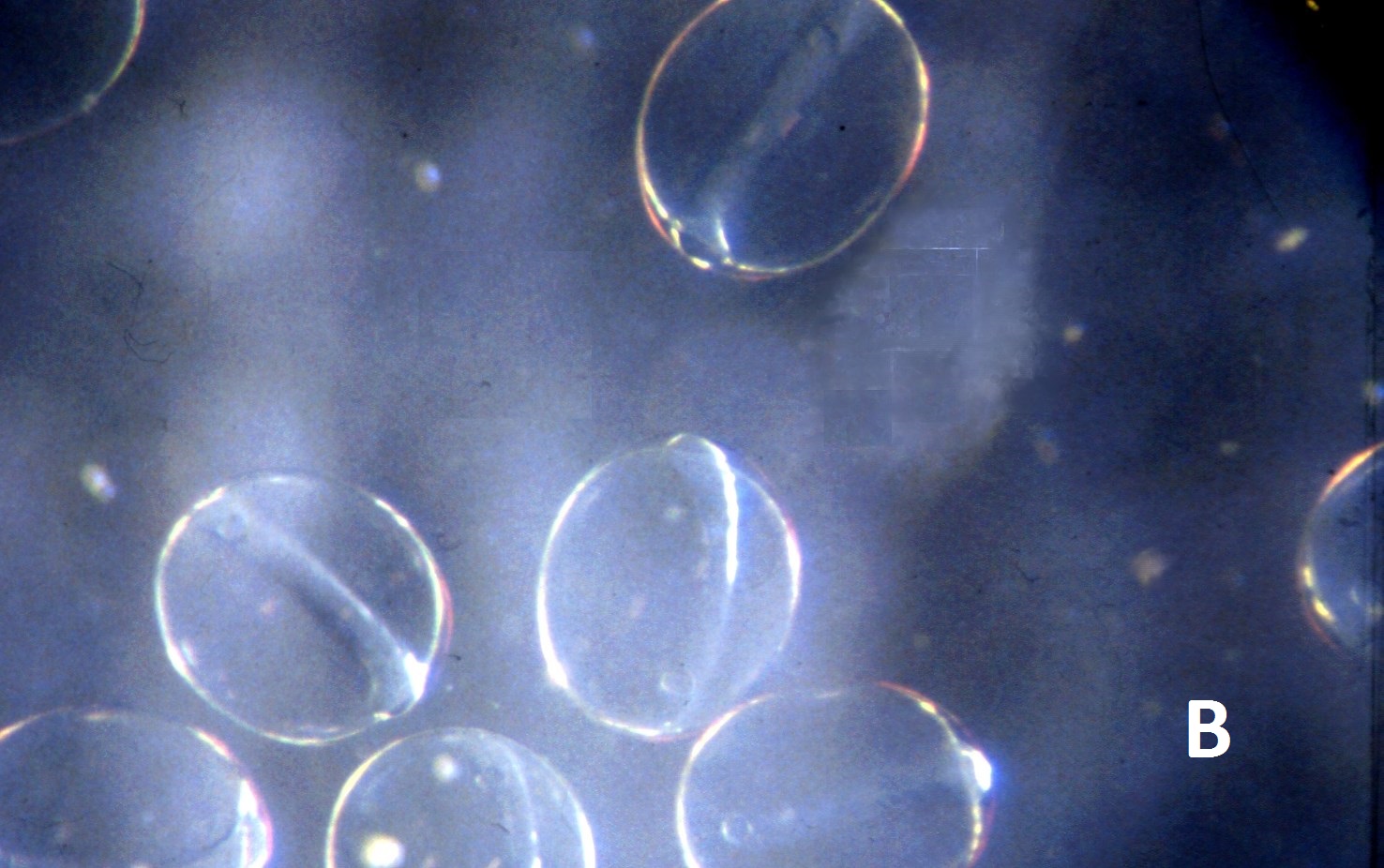
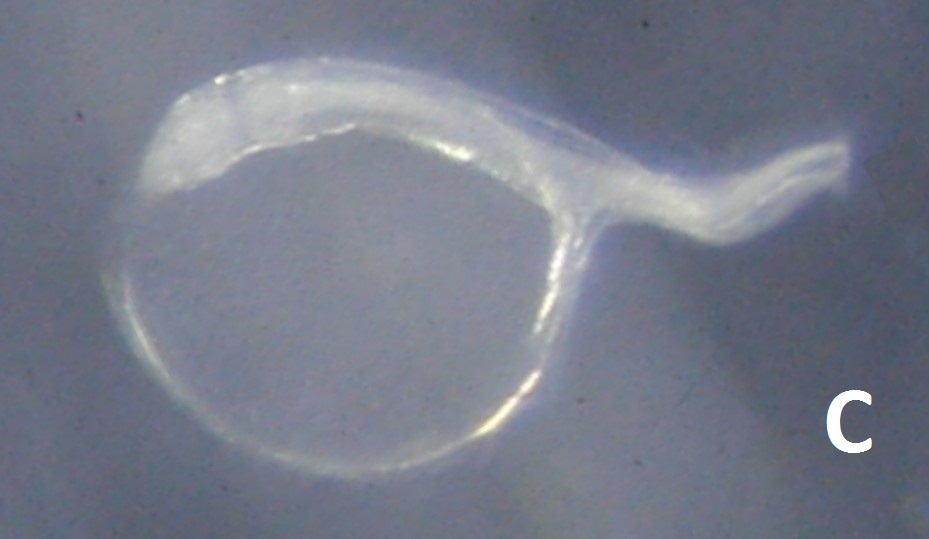

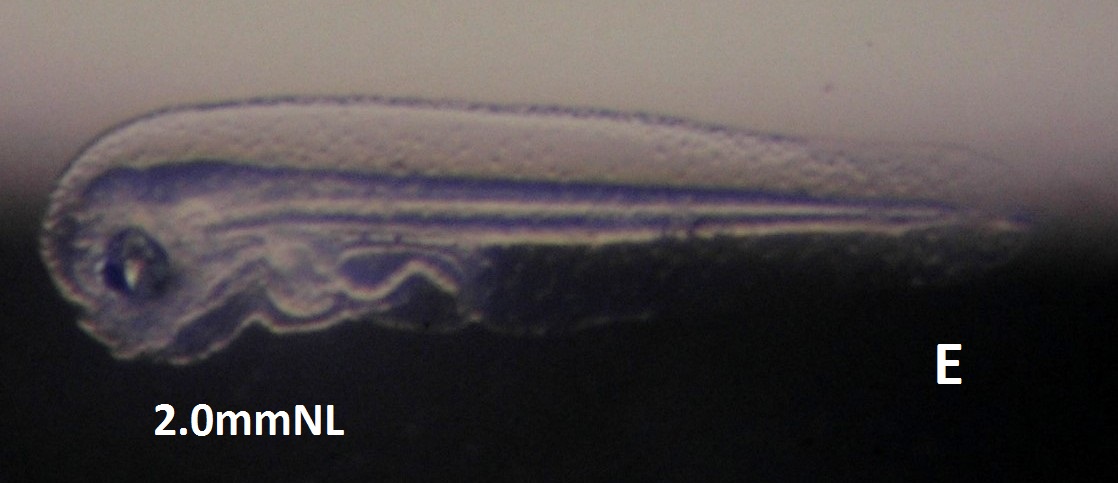
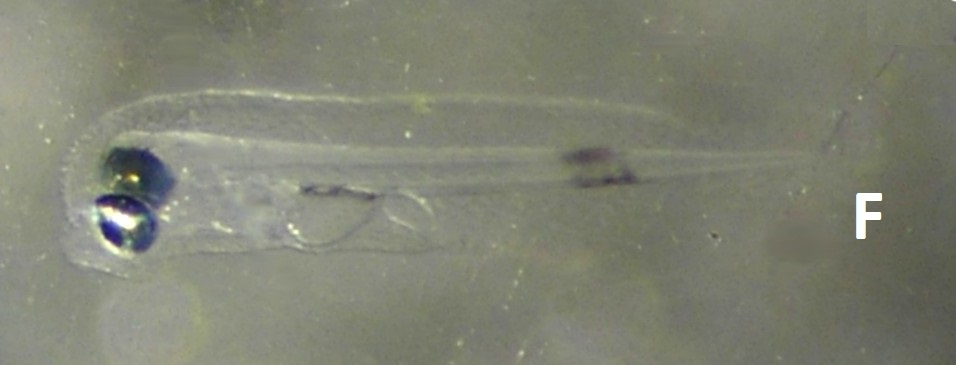

Egg size in µm |
Number of oil globules |
Diameter of oil globule in µm |
Yolk texture |
Perivitelline space |
Position of oil globule at hatch |
Gut length at eye- pigment stage |
Myomeres |
870-1000 x 650-870 |
0 |
N/A |
clear |
narrow |
N/A |
48% of NL |
24 |
Egg: This egg is initially spawned as a cluster containing several thousand eggs in a gelatinous ball that is sufficiently robust to hold in the cupped hand. Within 24 hours in a bowl of seawater, the gel dissolves, leaving small oval eggs, which appear to have undergone little development. Incubation takes about 30 hours after release from the gel-sac.
Larva: Newly hatched larvae have no pigmentation, and a rough finfold surface (E). At 6 days some black pigment develops over the gut and around the notochord, about halfway between anus and notochord tip (E & F). At 8 days a black trim develops on the pectoral fins (G). C: 1day, D: 4 days, E & F 6days, G: 8 days.
For the size of the egg, these larvae are slow developing. In most larvae from eggs this size, such as sparids and haemulids, eyes and mouth are developed at about day 4, but at that stage these larvae still have unpigmented eyes. Pigmented eyes and a functional mouth only develop 24-48 hours later. Of the 8 larval sequences available, 4 have matched an adult Scorpaenopsis possi (BOLD), while 3 match the only adult Parascorpaena mossambica sequence currently available (BOLD). A single larva hatched from an egg collected in March 2010 has matched a single adult Trachyscorpia eschmeyeri collected on the Agulhas Bank (BOLD). All these adult identifications are mine, and tentative, since each is based on a single adult, and these await confirmation.



Linked samples |
Offshore |
Inshore |
Eggs |
1402 |
239 |
Hits |
37 |
66 |
These eggs were found to be common both offshore (blue graph) and in DHM samples (green graph). In the DHM samples, gel-sacs were common, with some evening sampling tows yielding 4 gel-sacs in a 10 minute haul. At other times, and in all offshore samples except the big peak in July 1989 (graph above), only individual eggs were found. The data probably involves several species, given the wide range in egg size noted above.
A far higher number were found offshore, in the Park Rynie linked samples (85%), which suggests these eggs are mostly from deep-water species, spawning around the 50m contour. See Section 7.3 and Table 1 of the Introductory Notes, for more information on the linked samples.
The higher number of "hits" inshore indicated that, though more frequently present, there were less eggs per sample, consistent with the eggs being spawned further offshore. This conflicting distribution ( more common in Park Rynie’s offshore samples, yet common in Durban Harbour Mouth) supports the suggestion that this is a complex of species.